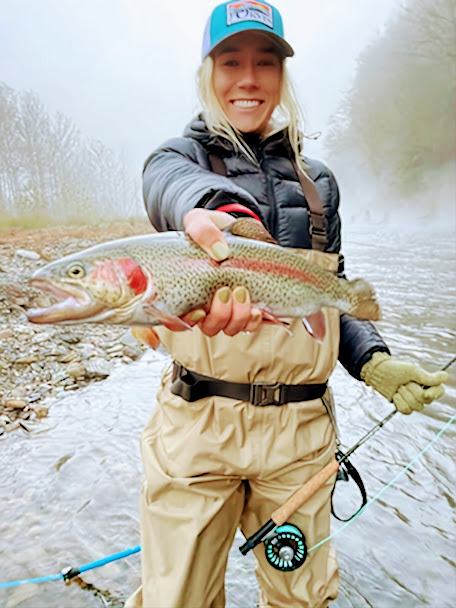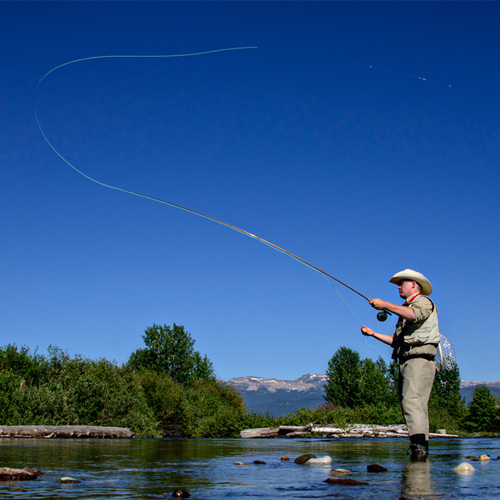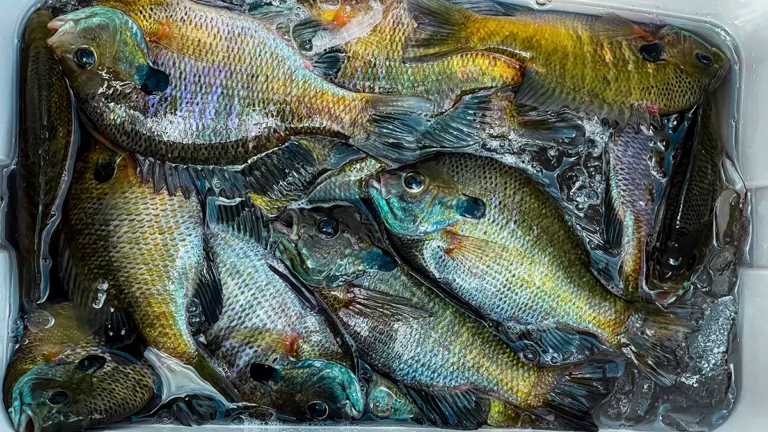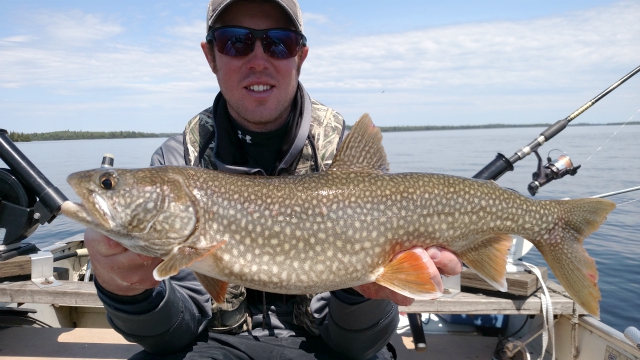Professional Fly Fishing Line Guide: Master Your Cast Today
Fly fishing is an art. It requires skill, patience, and the right gear.
Selecting the best fly fishing line can be tricky. In this guide, we simplify the process for you. We break down the essentials of fly fishing lines. Each type of line has its unique features and benefits. Understanding these can improve your fishing experience.
Whether you’re new to fly fishing or looking to refine your skills, this guide will help. We cover everything from line weight to taper design. By the end, you’ll know how to pick the right line for your needs. Let’s dive into the world of professional fly fishing lines.

Credit: www.youtube.com
Introduction To Fly Fishing
Fly fishing is a popular sport that combines skill and patience. It involves using a lightweight lure, known as a fly, to catch fish. This method of fishing is as much about the experience as it is about the catch. Understanding the basics of fly fishing can greatly enhance your experience and success on the water.
History Of Fly Fishing
Fly fishing has a rich and fascinating history. It dates back to ancient times. The first known reference to fly fishing comes from Macedonia in the second century. Anglers used artificial flies made from wool and feathers to catch fish. Over the centuries, the sport evolved. In the 15th century, fly fishing gained popularity in England and Scotland. Anglers began to develop new techniques and equipment. The modern form of fly fishing emerged in the 19th century. Advances in materials and design led to the rods and lines we use today.
Basics Of Fly Fishing
Fly fishing uses a different technique than other forms of fishing. The angler casts a lightweight fly using a weighted line. The fly imitates insects that fish eat. Proper casting technique is crucial. It ensures the fly lands gently on the water. This mimics the behavior of real insects. Fly fishing also requires different equipment. A fly rod is longer and more flexible. The fly line is thicker and heavier. This helps to cast the fly accurately. Understanding the basics of fly fishing can make a big difference. With practice, you will improve your skills and enjoy the sport even more.
Types Of Fly Fishing Lines
Choosing the right fly fishing line is crucial for a successful fishing trip. Understanding the different types of lines can help you make an informed decision. Below, we explore the three main types of fly fishing lines: Floating Lines, Sinking Lines, and Sink-Tip Lines.
Floating Lines
Floating lines are the most common type of fly fishing line. They are designed to stay on the water’s surface. Anglers use them for dry flies, nymphs, and streamers. These lines are ideal for beginners. They are easy to cast and control. Floating lines are great for fishing in shallow waters. They also work well in fast-moving streams.
Sinking Lines
Sinking lines are designed to sink below the water’s surface. They are useful for reaching deeper fish. These lines come in different sink rates. The sink rate determines how fast the line will sink. Anglers use sinking lines for fishing in deep waters or fast currents. They are perfect for catching fish that stay near the bottom.
Sink-tip Lines
Sink-tip lines are a combination of floating and sinking lines. The front part of the line sinks, while the rest floats. This design helps to keep your fly at a specific depth. Anglers use sink-tip lines for fishing in rivers and lakes. They are effective for catching fish at mid-depth. These lines offer better control and precision.
Choosing The Right Line
Choosing the right fly fishing line is crucial. It impacts your performance and success. The right line depends on various factors. Let’s explore these in detail.
Fishing Conditions
Fishing conditions play a vital role in line selection. Different conditions demand different lines.
- Weather: Windy days need heavier lines for better control.
- Water Type: Saltwater lines differ from freshwater lines. Saltwater lines resist corrosion.
- Water Clarity: Clear water requires subtle presentations. Use lines with less visibility.
Target Species
Your target species influences your line choice. Each species behaves differently.
| Species | Recommended Line |
|---|---|
| Trout | Floating Line |
| Salmon | Intermediate Line |
| Bass | Sinking Line |
Personal Preference
Your personal preference also matters. Comfort and familiarity with the line improve your fishing experience.
- Line Weight: Choose a weight that matches your rod and reel.
- Line Color: Some prefer bright colors for visibility. Others prefer subtle colors for stealth.
- Line Material: Different materials offer different flexibilities.
Remember, the best line for you is one you feel confident using.
Line Weight And Balance
Understanding the importance of line weight and balance is crucial for any professional fly fishing enthusiast. The right line weight ensures smooth casting and accurate presentation. An imbalanced setup can ruin even the best fishing experience. This section will guide you through the essentials of line weight and balancing your rod and line.
Understanding Line Weight
Line weight refers to the thickness and weight of the fishing line. It is usually measured in numbers, ranging from 1 to 14. Lower numbers signify lighter lines, ideal for small fish and delicate presentations. Higher numbers indicate heavier lines, suitable for larger fish and longer casts.
Selecting the appropriate line weight depends on the type of fish you target and the fishing conditions. For instance, a 3-weight line is perfect for trout in a small stream. On the other hand, a 9-weight line is better for catching bass in a large lake.
Balancing Rod And Line
Balancing your rod and line is essential for optimal performance. A balanced setup allows for smooth casting and reduces fatigue. First, check the rod’s weight rating, usually printed near the handle. This rating indicates the ideal line weight for that rod.
Pairing a 5-weight rod with a 5-weight line ensures balance. Using a mismatched pair can result in poor casting and strain on your arm. Test the balance by holding the rod and making a few practice casts. The rod should feel comfortable and responsive.
Achieving the right balance enhances your fishing experience. You can cast further and more accurately. So, always ensure your rod and line are perfectly matched.
Line Tapers Explained
Understanding line tapers can greatly improve your fly fishing experience. Different tapers serve different purposes and can affect casting performance. This section will explain the main types of line tapers: Weight Forward Taper, Double Taper, and Shooting Taper.
Weight Forward Taper
The weight forward taper is the most common fly line taper. It has more weight in the first 30 feet. This design helps with long casts and better control in windy conditions. The front-loaded weight makes it easier to cast heavy flies and streamers.
Double Taper
The double taper line has a symmetrical design. It has equal taper on both ends. This makes it great for delicate presentations and roll casts. With a double taper, you can switch ends when one side wears out. This can extend the life of your line.
Shooting Taper
The shooting taper has a heavy front section and a thin running line. This design helps achieve longer casts with less effort. It is ideal for fishing large rivers or lakes. The thin running line reduces friction, allowing the line to shoot through the guides more easily.
Line Maintenance And Care
Maintaining and caring for your professional fly fishing line is crucial. Regular maintenance ensures your line performs well and lasts longer. Proper care involves cleaning and storing your line correctly.
Cleaning Your Line
Regularly cleaning your fly fishing line is essential. It removes dirt, algae, and other debris, which can affect casting performance. Follow these simple steps:
- Fill a bucket with lukewarm water.
- Add a few drops of mild dish soap.
- Soak the line for 10-15 minutes.
- Gently run the line through a soft cloth.
- Rinse thoroughly with clean water.
- Dry the line with a soft towel.
Clean your line after every few fishing trips. This practice helps maintain its condition.
Storing Your Line
Proper storage is vital to extend the life of your fly fishing line. Follow these tips:
- Keep the line in a cool, dry place.
- Avoid direct sunlight, which can damage the line.
- Store the line loosely coiled to prevent kinks and twists.
- Use a line spool or a storage bag designed for fly lines.
Inspect your line regularly for any signs of wear. Replace it if you notice any cracks or significant damage.
Advanced Casting Techniques
Advanced casting techniques can elevate your fly fishing skills. Mastering these techniques will help you cast more accurately and reach farther distances. Let’s explore some of the advanced casting techniques.
Roll Cast
The roll cast is essential in tight spaces. It helps when there are obstacles behind you. To perform a roll cast, start with your rod tip close to the water. Slowly lift the rod, creating a loop of line behind you. Flick the rod forward, rolling the line out. This technique is efficient and reduces tangles.
Double Haul
The double haul technique adds distance to your cast. It involves pulling the line with your non-rod hand. First, perform a standard backcast. Just before the line straightens, pull down with your line hand. On the forward cast, repeat the pull. This adds speed and energy to your cast. It is perfect for casting in windy conditions.
Reach Cast
The reach cast helps place your fly more accurately. It allows you to mend your line in the air. Start with a standard cast. As the line unrolls, reach your rod to the side. This creates an “S” shape in the line. It helps counteract current and drag. This technique is useful for precise fly placement.
Common Mistakes And Solutions
Fly fishing is an art that takes practice and patience. Many anglers make common mistakes with their fishing line. These mistakes can affect their overall experience and success. This section will highlight some of these mistakes and offer solutions to improve your fly fishing skills.
Overlining And Underlining
Overlining and underlining are frequent errors in fly fishing. Overlining means using a heavier line than the rod recommends. This can make casting difficult and tiring. Underlining means using a lighter line than recommended. This can reduce the rod’s performance.
Solution: Always match the line weight to your rod’s specifications. Check the rod’s label for the correct line weight. If unsure, consult a professional or experienced angler for advice. Using the right line weight ensures better performance and enjoyable fishing.
Poor Casting Technique
Poor casting technique is another common mistake. It can lead to tangled lines, missed targets, and frustration. Common issues include improper timing, incorrect wrist movement, and poor line control.
Solution: Practice makes perfect. Start by watching videos or taking a class on proper casting techniques. Focus on smooth, controlled movements. Keep your wrist firm and practice your timing. Another useful tip is to practice on dry land before hitting the water. This helps in mastering the technique without distractions.
| Common Mistake | Solution |
|---|---|
| Overlining | Match line weight to rod specifications |
| Underlining | Use the correct line weight for optimal performance |
| Poor Casting Technique | Practice smooth, controlled movements and proper timing |
- Watch instructional videos
- Take a casting class
- Practice on dry land
Improving your fly fishing technique takes time. Be patient and practice regularly. With the right approach, you’ll see improvement and enjoy your fishing trips more.
Top Brands And Recommendations
Choosing the right fly fishing line can be challenging. With many brands and options, it’s easy to feel overwhelmed. This guide will help you pick the best lines from the top brands. Let’s dive into our recommendations.
Popular Fly Line Brands
Some fly line brands stand out for quality and performance. Scientific Anglers is well-known. They offer a variety of lines for different conditions. Another top brand is Rio. Many fly fishers trust Rio for their reliable products. Orvis is also a favorite. Their lines are durable and easy to cast. Cortland is worth mentioning too. They have been in the game for years with consistent quality.
Best Lines For Beginners
Beginners need lines that are easy to cast and control. Scientific Anglers’ AirCel is a great choice. It’s affordable and user-friendly. Rio Mainstream is another good option. It helps beginners cast with ease. Orvis Clearwater is also recommended. It’s designed to help new anglers improve their skills. Cortland Fairplay is good for those starting out. It offers good performance at a low price.

Credit: www.beaversbendflyfishingguideservice.com

Credit: www.takemefishing.org
Frequently Asked Questions
What Is The Best Fly Fishing Line?
The best fly fishing line depends on your fishing style and target species. Floating lines are versatile for most situations. Sinking lines are ideal for deep waters.
How Do I Choose Fly Fishing Line Weight?
Choose fly fishing line weight based on the rod and reel specifications. Match the line weight to ensure optimal performance and casting accuracy.
Why Is Fly Line Taper Important?
Fly line taper affects casting distance and accuracy. Weight-forward tapers are great for long casts. Double tapers provide better control for delicate presentations.
How Often Should I Replace My Fly Fishing Line?
Replace your fly fishing line every one to two years. This ensures optimal performance and prevents breakage due to wear and tear.
Conclusion
Choosing the right fly fishing line is essential for a great experience. . . . . . . . . . . . . . . . . . Is a crucial step for any angler. . . . .
. . . . . . . . . . Helps you cast better and catch more fish. . . . . . Efficiently. . . . . . . . . Improve your skills and enjoy your time on the water.
. . . Fly fishing. . . . To suit your needs and preferences angler’s paradise. . . , with ease. And confidence in your gear fly fishing. Adventure awaits you on every cast angler’s paradise. Happy fishing! And tight lines fly fishing line angler’s paradise.
. And tight lines. In your fly fishing journey angler’s paradise. . And tight lines fly fishing odyssey awaits you angler’s paradiseov





